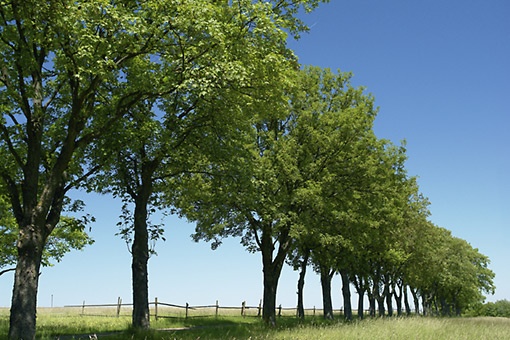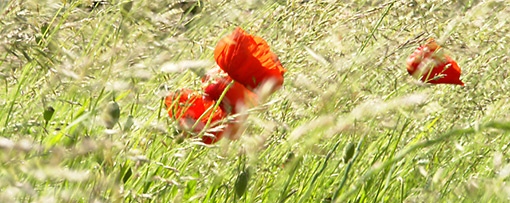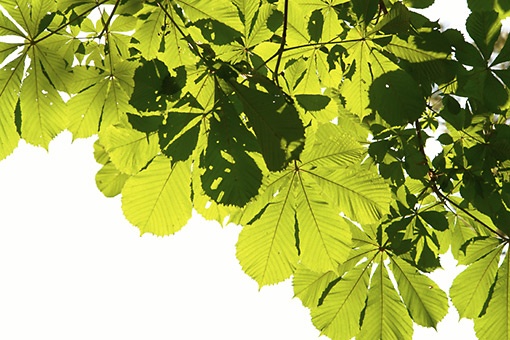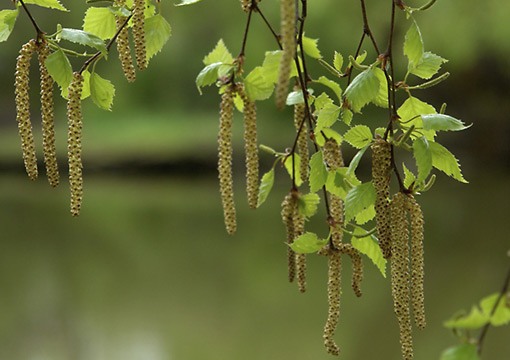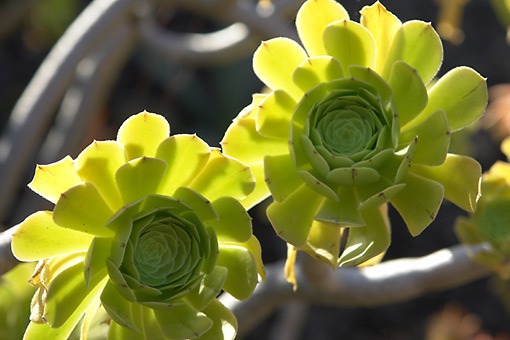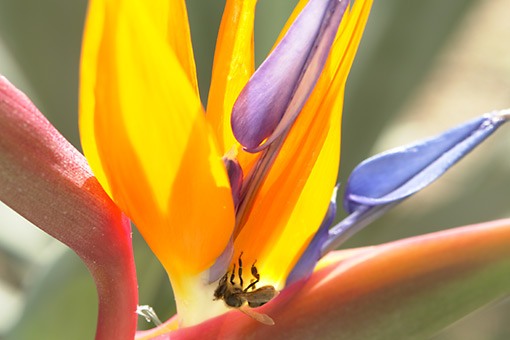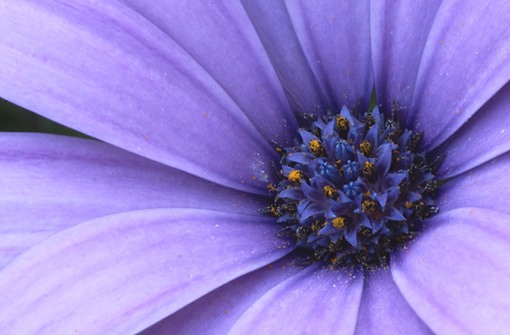Nature and Landscape
Manifold subjects are available for those who are able to see them. If it is landscapes,
trees, flowers or the wildlife, the variety is large. Then choose the lens (the focal length) –
do I take the wideangle or better the telephoto for a more selective view? Or do I go into
the smallest detail in a scale that is even larger than you are able to see with a magnifying
glass? In this case you definetely have to use a tripod and a lot of patience. 😉
A new photography, taken in springtime I like alignings like that, they create depth
in the picture. To get more saturated colors I underexposed 1/3 EV.
Lens: 42 mm; ISO: 160; f-stop: 5.0; shutter time 1/640 sec; exposure correction: -0.3 EV
_____________________________________________________________
I tried to illustrate the wind on the meadow, so I used a small aperture opening
to get a long shutter time to be able to see the movements of the grass. To put the
stress on the poppy blossoms I cropped the picture afterwards. To get the grass more
brilliant, I overexposed 0.7 EV.
Lens: 120 mm; ISO: 160; f-stop: 16; shutter time: 1/40 sec; exposure correction +0.7 EV
_____________________________________________________________
This photo is for the shapes, the structures and the shadows. It´s nearly monochrome
(only bright and dark with only one colour). Here, too I overexposed 0.7 EV to get a more
brilliant impression in the green colours.
Though the sky was pretty clear it is impossible to get the blue colour because of the high
contrasts. The sky was simply to bright. No camera is able to „see“ and reproduce this. Only
our eyes can.
Lens: 120 mm; ISO: 160; f-stop: 6.3; shutter time: 1/200 sec; exposure correction von +0.7 EV
_____________________________________________________________
An example that even a cloudy day can lead to nice pictures
Lens: 120 mm; ISO: 200; f-stop: 4.8; shutter time: 1/160 sec
_____________________________________________________________
Nature details are always attractive subjects. Rarely one looks that close to details and so
they are attracting more attention, simply because the photographer did. For plants and
flowers backlight (photographing in the direction of the sun) is nice, because you´re
getting a „lantern“ impression – the light is going through the leafs and so they´re appearing
even more colourful. Even a shortcut lawn looks brighter green in backlight.
Lens: 120 mm; ISO: 160; f-stop: 4.8; shutter time: 1/250 sec
_____________________________________________________________
Of course it may be really colourful for a change. Even better when there´s the opportunity
to snapshoot a bee…
Lens: 120 mm; ISO: 160; f-stop: 7.1; shutter time: 1/125 sec
_____________________________________________________________
Though with those macro shoots the depth of field is extremely narrow, so better choose a
small aperture (high number, small opening!) to achieve a wider depth of field. Using a tripod
with shots like that is propably a good idea. Otherwise the longer shutter time makes you blurr
the photo. On the other hand you have to take care that no breeze is shaking the flower.
Lens: 105mm; Makro-Lens; ISO: 125; f-stop: 16; shutter time: 1.3 sec

